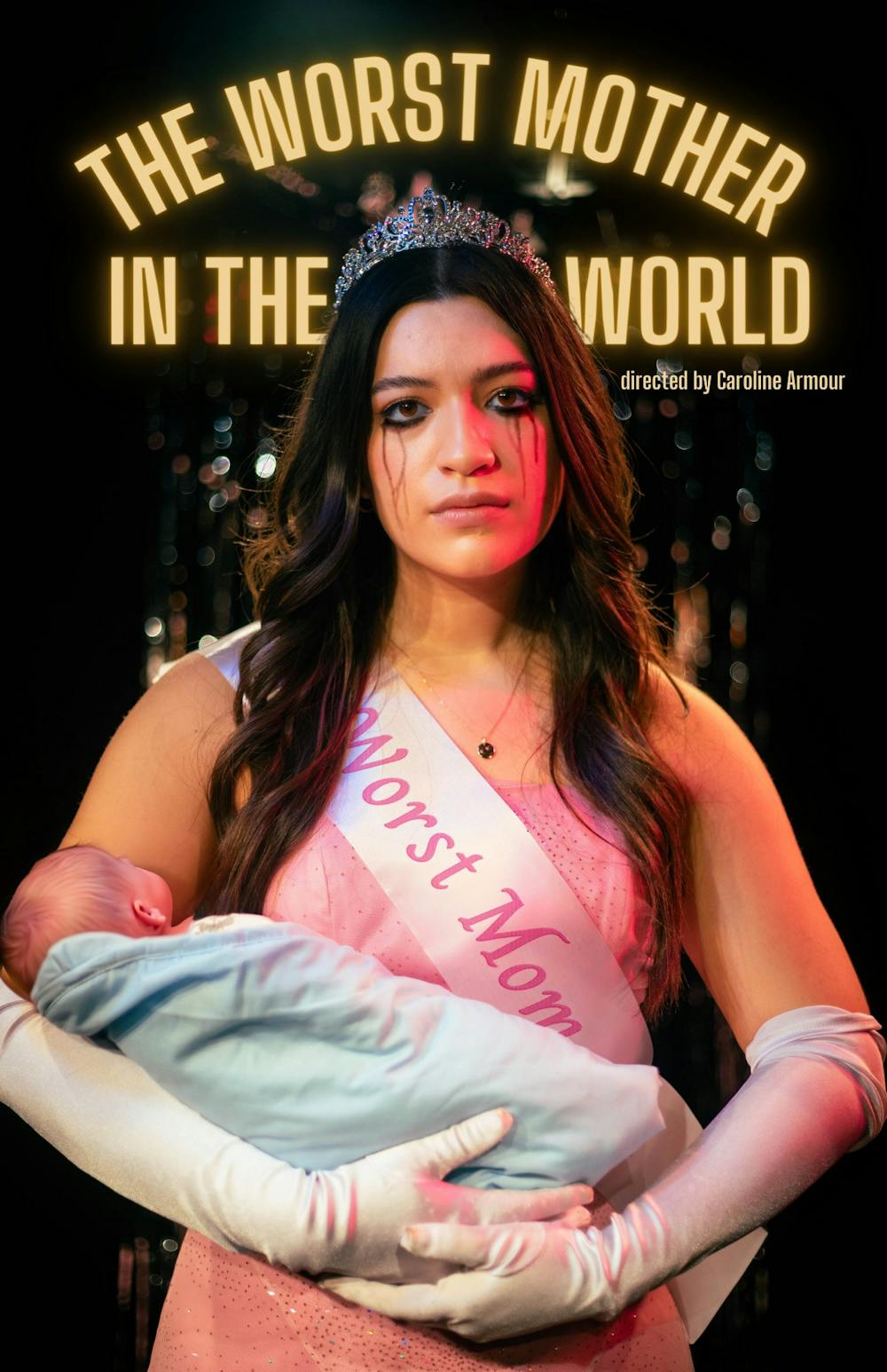As three women each navigate the burden of motherhood, expectations and women’s health, their lives intertwine in “The Worst Mother in the World,” a play by New York-based playwright Kari Bentley-Quinn. The show opened at the Hepburn Zoo on Thursday, April 11, serving as the senior directing work of Caroline Armour ’24, senior acting work of Katelyn Wenkoff ’24 and senior lighting design work of KK Newton ’24.
The play began by introducing Nina (Wenkoff), who is adjusting to motherhood amidst frightening nightmares and anxiety attacks. Nina’s therapist (Victoria Fischer Luksch, a local actor and academic coordinator for multiple departments) supports her through this journey while also facing challenges with her estranged pregnant daughter Mary (Molly Snow ’26).
As friendship, misunderstandings and personal differences intertwine, the lives of these three women become increasingly complex, culminating in the audience witnessing powerful confessions that reveal motherhood to be a blend of emotions beyond simple love or hate.
“I wanted to produce this play in order for real people to see themselves and their real struggles represented on stage. Putting visualizations to mental health issues and bringing to life these visceral fears gives us a profound opportunity to empathize with three women who are not always on their best behavior” Armour wrote in her Director’s Note.
One of the most captivating elements of the performance was the occasional appearance of a mysterious masked figure (Pearl Benjamin ’24.5), referred to as a puppet and adorned in a black bodysuit with a wrapped head and a single-paned goggle. This presence emerges in Nina’s nightmares. During scene transitions, the figure deftly manipulates objects within the set, erasing whiteboards or repositioning paintings.
While symbolizing Nina’s inner turmoil, Benjamin’s precise and deliberate movements infused the figure with an eerie aura, leaving a profound impact on the audience and further adding psychological depth to Nina’s character. At the height of the production, the figure makes a striking entrance into Hepburn Zoo, wearing a costume evocative of a vaginal motif. These fleeting yet powerful performances by the figure injected a nuanced layer of tension, further heightening the already immersive experience of the production.
The use of lighting also added to the deeply emotive experiences of the characters’ experiences. Nina’s nightmares are brought to life with dark shades of purple and blue, accentuated by a red spotlight that captivated the audience’s attention. Conversely, scenes set in the therapist’s office are bathed in a comforting yellow glow, signaling a return to reality. Notably, a black-and-white portrait of the masked figure looms in the background, its gaze seemingly locking with the audience’s, almost daring viewers to avert their eyes.
The rehearsal process began at the start of the spring semester with a couple of weeks of tablework, during which the production team analyzed and unpacked the script. Following this, actors attended three to four sessions per week to refine their performances as Armour directed. The cast had weekly production meetings, including set, costume, lighting and sound directors, every Monday to track progress and ensure they were on schedule. In the final two weeks before the production, rehearsals were held daily.
One challenge faced by the production team was determining the appearance of a mysterious puppet, as the script provided limited details. However, thanks to the innovation of set designer Qinyi Hua ’25, the masked figure came away as one of the most memorable characteristics of the production. Hua’s contributions extended beyond the puppet; she also optimized the limited space at Hepburn Zoo to depict various scenes. While the production primarily unfolded in the therapist’s office, other settings like the gynecologist’s office and a park were also portrayed.
A personal challenge for Wenkoff was portraying a character dealing with chronic stress, anxiety and motherhood, which were unfamiliar experiences for her. To tackle this, Wenkoff delved into research by consulting individuals in her network who had undergone similar life situations.
“Victoria [Fischer Luksch], who played Bonnie, the therapist — she’s had five kids, so she was a huge wealth of knowledge,” Wenkoff said. “She shared her own experiences and those of her friends, providing valuable insights into the complexities of parenting multiple children.”
Despite these challenges and the shorter rehearsal timeframe, Wenkoff learned the importance of one thing in this production: trust. “To trust the process and to trust your team because I’m a perfectionist so I like to have my hands in everything, but with things like this you have to trust your team,” Wenkoff said.
“The Worst Mother in the World” delves into the shared experiences and emotions often concealed within a mother's private realm, bringing them to the forefront of the stage. The audience experiences a multifaceted depiction of motherhood that challenges and reshapes perceptions of maternal roles, emphasizing the sacrifices, triumphs and mistakes that all women make in the pursuit of raising a family.
Armour dedicated the show to her own mother, who sat in the audience.
“To my own mother, who was nothing of the sort,” she wrote in her Director’s Note. “I would pick you to be my mother again in every lifetime.”
As the production concluded at midnight, a resounding standing ovation underscored a collective realization among the audience: It’s our mothers’ first time being mothers, too.




